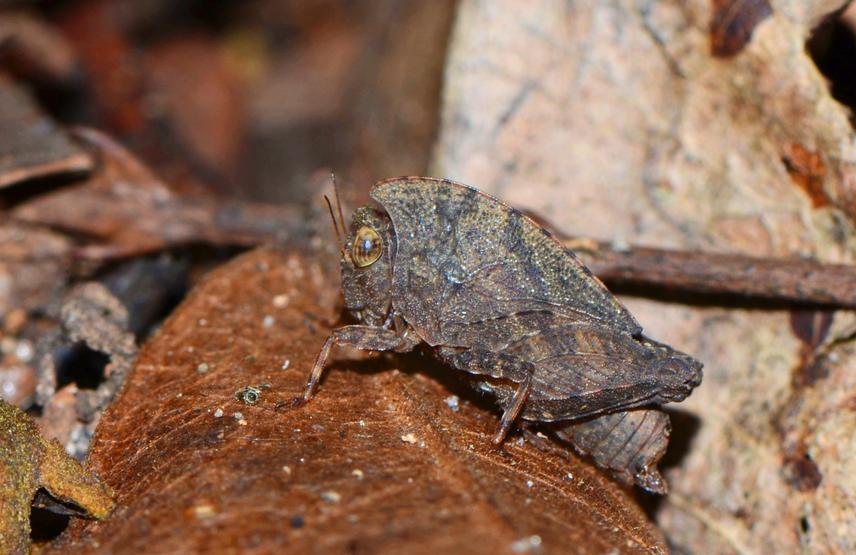Dhaneesh Bhaskar
Other projects
18 Oct 2024
The Crocodile Grasshopper, Ecology and Conservation of Semi-Amphibious Grasshoppers in Nilgiri Biosphere Reserve, India
Grasshoppers are a significant group of herbivorous insects dominating open ecosystems and often the most important primary consumers in many ecosystems, including the grasslands. There is only very little known about the grasshoppers that are exclusive to certain habitat conditions. Being one of the significant primary consumers, the grasshoppers act as an indicator of ecosystem health. Many grasshopper species are flightless and endemic to narrow geographic ranges; they are sensitive to environmental changes and exhibit a high extinction risk. They can act as a model organism with their short lifespan and wide distribution range across different terrestrial ecosystems.

Adult Deltonotus subcucullatus. © Dhaneesh Bhaskar
Many grasshoppers occupy unique and narrow habitat ranges. The Western Ghats region is the type locality for some endemic grasshoppers. But none of these grasshoppers of India has their conservation status as per the IUCN guidelines. Most of them are being side-lined as agricultural pests. The managers of protected areas (Forest departments) and the public are less aware of grasshoppers' importance as a biodiversity indicator. Grasshoppers as biodiversity indicators, their ecological significance, and conservation requirements need to be investigated in protected areas.
The Deltonotus gibbiceps and Deltonotus subcucullatus are two flightless grasshoppers that are restricted to the Western Ghats' evergreen forests in India. Even though they were described in 1904, there was hardly any information generated on them since description. With the elevated vertex and median carina of the pronotum and wide hind femora, the genus Deltonotus of subfamily Cladonotinae is known as “crested pygmy grasshoppers” (Bhaskar et al. 2020). During my PhD programme, extensive fieldwork in the Western Ghats provided new distribution records for the genus Deltonotus. The species were collected from protected areas of Kerala at an elevation range of 400 to 1500 m asl. They are flightless pygmy grasshoppers that are found syntopically and well camouflaged with evergreen forests' litter beds. The cryptic colouration, role in nutrient cycling, interaction with ground-dwelling birds and reptiles, ecological significance, and unique habitat specificity of Deltonotus need to be investigated. The conservation status of Deltonotus sp. are being assessed by me as two among the 30 listed species for IUCN for the first time in India. With a narrow range of distribution and unique habitat specificity, they are threatened and need to be conserved as an evergreen health indicator species. We look forward to generate more information on these rare insect representatives of our evergreen forest habitats.